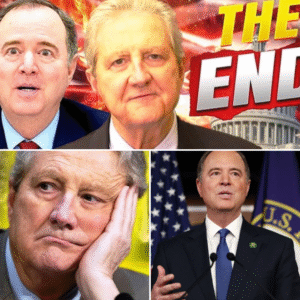SHOCKING REVELATION: Founding Fathers Would Be ‘Disgusted’ by Trump’s White House Ballroom Overhaul
In a blistering CNN appearance that has historians and patriots reeling, Edward Lengel, former chief historian of the White House Historical Association, tore into President Donald Trump’s audacious plan to transform the White House with a massive 90,000-square-foot ballroom. Speaking on October 23, 2025, Lengel didn’t hold back, declaring that the Founding Fathers would be “disgusted” by the demolition of the historic East Wing to make way for this $300 million project. He warned that this is just the beginning of changes that could permanently alter the Executive Mansion, a cherished symbol of American democracy. With construction cranes looming over Washington and social media ablaze, the controversy has sparked a fierce debate over legacy and power. What is Trump planning, and why are historians sounding the alarm? The battle over the White House’s soul is shaking the nation to its core.

The saga began in early October 2025, when White House officials quietly announced the East Wing’s demolition—a 1920s addition housing the First Lady’s offices—without the usual congressional oversight. Trump, nine months into his second term, pitched it as a necessary upgrade. During an October 20 Rose Garden press conference, he unveiled renderings of a gilded, conservatory-style ballroom with arched windows and chandeliers, capable of hosting 600 guests. “They’ve wanted a ballroom for 150 years,” Trump boasted, claiming private donors, including himself, would foot the $300 million bill to avoid taxpayer costs during a contentious government shutdown. But critics like Lengel see it as a dangerous first step toward turning the “people’s house” into a presidential palace.
Lengel’s CNN takedown, which exploded online with millions of views, rooted his outrage in the White House’s founding principles. As a George Washington biographer, he argued the mansion, designed in 1800 by James Hoban under Washington’s vision, embodies modest evolution—from Teddy Roosevelt’s West Wing to Jacqueline Kennedy’s restorations. “This giant ballroom will cast the Executive Mansion into the shade,” Lengel warned, “bearing one man’s name.” He invoked Washington and Thomas Jefferson, who rejected monarchical opulence to preserve democratic ideals. “Jefferson would have gone ballistically insane,” he said, calling the project a “smack in the face” to their vision. In a separate interview, he added that the founders explicitly avoided Versailles-like grandeur to keep the White House a symbol of the people, not personal ego.
Historians are alarmed for good reason. The East Wing, added under President Warren G. Harding, holds historical weight as the site of Eleanor Roosevelt’s press conferences and modern first ladies’ initiatives. Preservationists fear the ballroom’s scale—larger than one-and-a-half Olympic swimming pools—will overshadow the original neoclassical structure, shifting its identity from democratic beacon to personal monument. The National Trust for Historic Preservation has filed a lawsuit, alleging violations of historic preservation laws. “This isn’t renovation; it’s reinvention,” said Trust president Carol Cadou, echoing fears of further encroachments on the main residence or even the Oval Office.

Online, the backlash is intense. By October 24, #SaveTheWhiteHouse trended with half a million X posts, blending outrage with memes of Jefferson facepalming over gilded blueprints. Progressives decried the project’s extravagance amid unpaid federal workers, while conservatives split—some cheer Trump’s “make it great” vision, others call it tone-deaf. Leaked footage of demolition cranes sparked fury, with one viral post captioning it: “225 years of history erased for one man’s ego.” Trump’s defenders counter that past presidents reshaped the White House, but never at this speed or scale.
Trump’s stated goal? To host “the biggest galas in history” and fix overcrowded state events. Yet Lengel warns of “more surprises” ahead, hinting at broader plans. With construction barriers blocking public access, tourists and reporters grumble, and critics fear the White House’s bipartisan aura is fading. This isn’t just about aesthetics—it’s a referendum on power. In an era of executive overreach, is the people’s house becoming one man’s trophy? Lengel’s warning of the founders’ disgust has ignited a preservationist revolt, and as debates rage from TV panels to X threads, history hangs in the balance. The fight for the White House’s soul has only begun.





